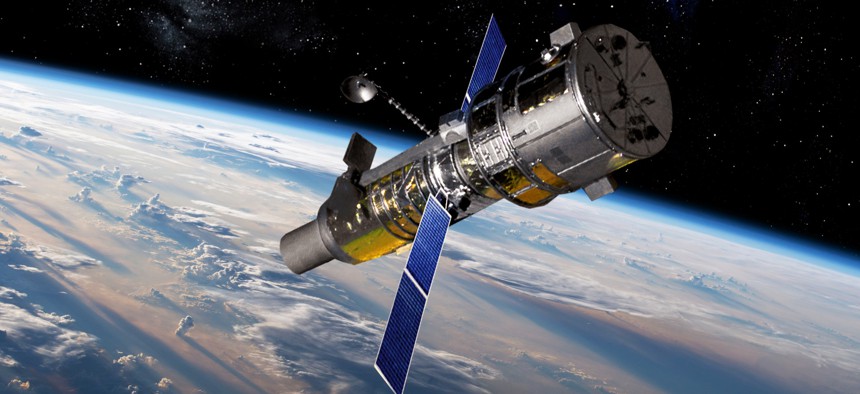U.S. space systems see 'dramatic' spike in risks amid global competition

Getty Images
Officials from the Defense Intelligence Agency said there's been a steep increase in the pace and scope of operations since 2019 primarily from China and Russia.
Threats to space-based systems, from navigation to communications, are increasing, defense intelligence officials warn.
Officials from the Defense Intelligence Agency said there's been a "dramatic" increase in the pace and scope of operations since 2019 primarily from China and Russia, but also North Korea and Iran.
John Huth, the DIA's defense intelligence officer for space and counterspace, told reporters that competitive space operations have increased across "nearly all major categories," including communications, remote sensing, and science and technology demonstration.
Both Russia and China's in-orbit assets grew 70% since 2019, which follows a 200% increase between 2018 and 2019, the officials told reporters on April 12. For China, that includes robotic landers and rovers, anti-satellite missile launch tests, and mobile jammers that can deny satellite communication and GPS.
Russia has developed a "suite" of counter-space capabilities, officials said, including electronic warfare to deny, degrade and disrupt communications and deny the use of space-based imagery.
Kevin Ryder, senior defense intelligence analyst for space and counter-space for DIA, said new risks to the United States' in-orbit assets would proliferate "as the number of space-faring nations grow, and counter-space capabilities become more integrated into military operations."
DIA summarized its analysis in a recently released report on current security challenges in space, which names threats as electronic warfare, cyberattacks, kinetic energy weapons, and nuclear detonation.
Cyberattacks, alongside physical attacks, can impact military and civilian ground sites and infrastructure "supporting space operations can threaten satellite services."
"With sophisticated knowledge of satellite [command and control] and data distribution networks, actors can use offensive cyberspace capabilities to enable a range of reversible to non-reversible effects against space systems, associated ground infrastructure, users, and the links connecting them," the report states. "Satellite command and data distribution networks expose space systems, ground infrastructure, users, and the links connecting these segments to cyber threats."
Electronic warfare capabilities, which includes jamming and signal spoofing, are also a concern because it is "challenging to attribute and distinguish from unintentional interference," the report states. Jamming can impact global navigation and command and control communications satellites, manned and unmanned vehicles used by military services.
The report also explores the effects of space debris, which can yield thousands of pieces of debris that linger in orbit for decades, as a threat to space-based systems, according to the report.
"The primary risk to spacecraft in orbit is from uncataloged lethal non-trackable debris (LNT), which are objects between 5 millimeters and 10 centimeters in size. An estimated 600,000 to 900,000 pieces of uncataloged LNT are in LEO."



